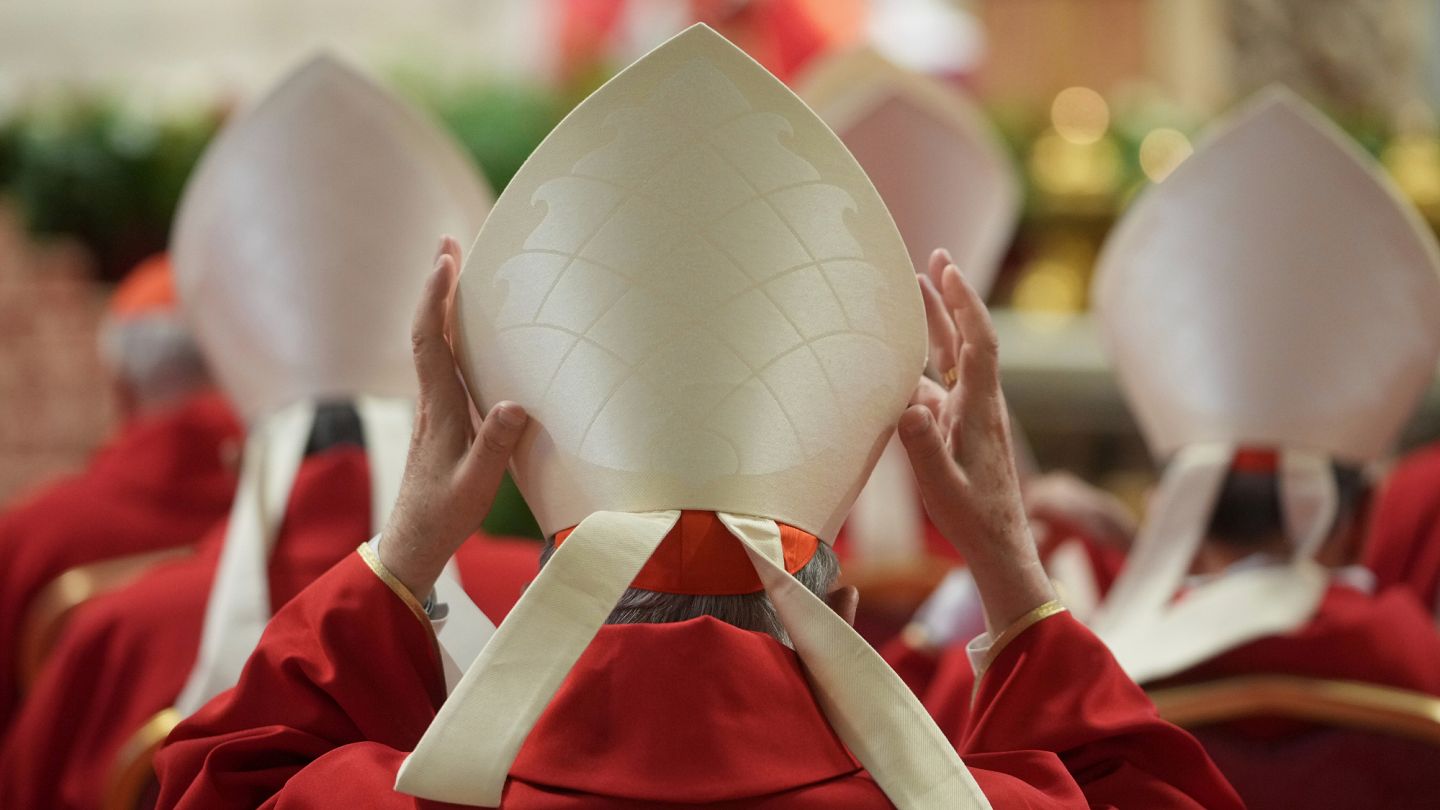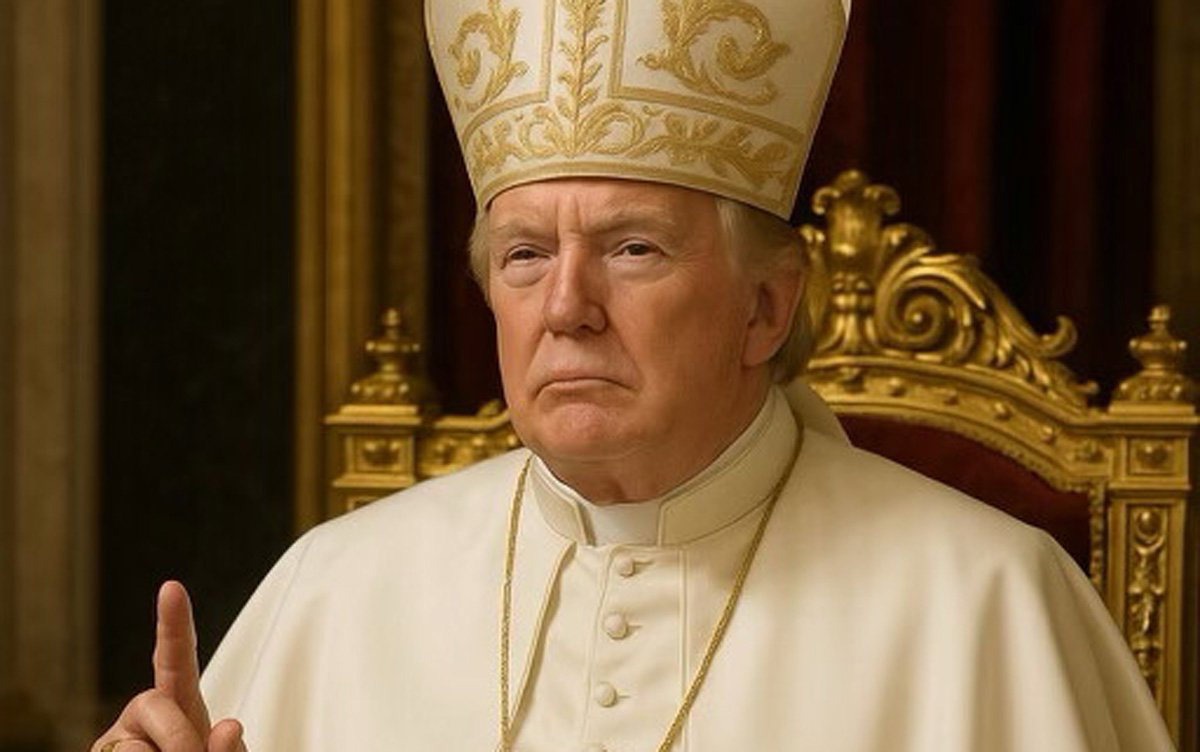Former U.S. President Donald Trump recently shared a digitally altered image of himself dressed in papal attire on his social media platform, Truth Social. The post—made shortly after the funeral of Pope Francis, held on April 26, 2025—has generated online criticism and renewed discussions about the respectful use of religious symbolism, particularly during periods of mourning in the Catholic Church.
This article explores the context of Trump’s post, the current status of the Catholic Church following Pope Francis’s passing, and the broader implications of AI-generated content featuring religious iconography.
Context: The Death of Pope Francis and the Vatican’s Mourning Period
Pope Francis, who served as the head of the Roman Catholic Church since 2013, passed away at the age of 88 on April 21, 2025, after a period of declining health. He was widely recognized for his focus on social justice, interfaith dialogue, and compassion toward marginalized communities.
The Vatican held his funeral at St. Peter’s Basilica on April 26, with world leaders and thousands of mourners in attendance. A papal conclave, the traditional assembly of cardinals to elect the next pope, is now underway.
Source: Vatican News – Pope Francis Funeral Coverage
Trump Shares AI-Generated Image in Papal Attire
On his platform Truth Social, Donald Trump posted an AI-generated image depicting himself dressed in white papal vestments, including the mitre (a ceremonial headdress worn by bishops and popes) and a large cross necklace.
Although the post made no reference to mocking religion directly, it sparked immediate public reaction, as it was shared only days after Pope Francis’s funeral—a time of grief and solemn reflection for millions of Catholics worldwide.
AI-generated images of public figures have become increasingly common in political and entertainment circles. However, their use in religious or sacred contexts can be viewed as controversial, especially when posted during periods of collective mourning.
Source: Reuters – Growing Influence of AI Images in Public Discourse
Public Reactions: Criticism and Concern from Faith Communities
The image prompted significant discussion on social media platforms, with some users expressing concern over the perceived disrespect to the Catholic community. Several individuals—including self-identified Catholics—criticized the timing of the post, describing it as insensitive.
Among the concerns raised:
- The image was shared during the Church’s mourning period.
- The papal attire is deeply symbolic and traditionally reserved for ordained Catholic clergy.
- Using such attire in AI art may blur lines between satire, homage, and irreverence.
Despite the backlash, no official statement has been issued by the Vatican or the U.S. Conference of Catholic Bishops (USCCB) regarding the image.
Source: Catholic News Service – Reactions to AI Use in Religious Contexts
Understanding the Sacredness of the Papal Role
The papacy is considered by Catholics to be a sacred office, representing the spiritual leader of over 1.3 billion Catholics worldwide. The pope holds the title of Bishop of Rome and is regarded as the successor to Saint Peter, one of the twelve apostles of Jesus.
According to Canon Law, only a baptized male member of the Catholic Church is eligible to be elected pope by the College of Cardinals, although in practice, all modern popes have been cardinals prior to their election.
Source: Catechism of the Catholic Church – Papal Office
Therefore, portrayals of non-Catholic figures, especially prominent political ones, wearing papal garments—even in jest or through AI—can unintentionally raise theological or cultural concerns.

Previous Comments About the Papacy
Though no official plans or endorsements were tied to the post, Trump has previously made light-hearted remarks about the role of the pope. According to a 2020 report by Politico, Trump once joked to reporters that he would consider the papacy “a top role,” adding that it would be an “honor.”
Such remarks, made in informal settings, have often been interpreted as humorous exaggerations. However, in the context of a papal transition, religious leaders often encourage a tone of respect and restraint, particularly in public statements and social media activity.
Source: Politico – Trump’s Remarks on Religious Leaders
What Is the Conclave and Who Will Choose the Next Pope?
Following the funeral of Pope Francis, the College of Cardinals has convened in a conclave at the Sistine Chapel to elect a new pope. The voting process is conducted in secrecy, with a two-thirds majority required for a valid election.
According to Vatican tradition, the election results are signaled by the color of smoke released from the chapel chimney:
- Black smoke indicates no decision has been reached.
- White smoke signals that a new pope has been elected.
The conclave is expected to last several days, and speculation continues about potential successors, though the Vatican discourages public campaigning or external influence during the process.
Source: BBC – How Popes Are Elected
Conclusion: The Role of Sensitivity in Public Discourse
While AI-generated content can be an innovative form of expression, its use around religious symbols, especially during sensitive times, requires a thoughtful and respectful approach. The image shared by Donald Trump has drawn attention not only because of its subject but also because of the timing—occurring during the mourning period for a globally respected religious figure.
As public figures increasingly use digital platforms to engage with audiences, the line between personal expression and public responsibility continues to evolve. Ultimately, respect for religious traditions and communities remains a key consideration in how such content is received and interpreted.
Sources
- Vatican News – Pope Francis Funeral Coverage
- Reuters – AI Imagery and Public Discourse
- BBC – Papal Election Process
- Catholic News Service – AI in Religious Media
- Catechism of the Catholic Church – Papal Office
- Center for Humane Technology – AI Ethics
- Politico – Trump and Religion




